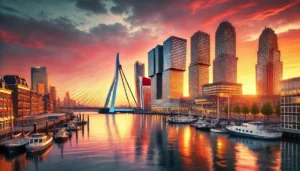The built environment is responsible for nearly 40% of global carbon emissions, yet it often goes unnoticed in discussions about energy consumption. While people tend to focus on transportation or industrial sectors (with 20% and 25% global carbon emissions, respectively), buildings quietly consume vast amounts of energy, day and night, with little thought given to the environmental impact.
Unlike transportation, where the act of filling a gas tank or charging a vehicle is tangible, buildings are tethered to energy sources continuously, and their consumption is often invisible. This disconnect leads to inefficiencies that, when addressed, can significantly impact both operating costs and carbon emissions.
In one instance, a building was found to be consuming over 34% more energy than necessary due to inefficiencies such as leaving lights and HVAC systems running overnight. By optimizing the building’s energy use, at the time of study, we demonstrated savings of more than $370,000 annually while dramatically reducing its carbon footprint. This example highlights how simple change, like adjusting lighting schedules or HVAC settings, can make a big difference.
The impact of optimizing energy use in buildings extends beyond financial savings and carbon reductions. It’s about creating a culture of responsibility and awareness. When organizations take the time to evaluate and reduce their energy consumption, they set a powerful example for employees, stakeholders, and the wider community. It shows that sustainability isn’t just a buzzword – it’s a business imperative. As more companies embrace energy-efficient practices, we can collectively move towards a future where our built environment plays a pivotal role in combating climate change while maintaining economic efficiency and enhancing corporate responsibility.
The challenge lies in making people aware of the energy their buildings consume and empowering them to make better choices. Most people aren’t intentionally wasteful – they either don’t realize how much energy is being used or know how to reduce it. The key is simplifying it and aligning energy-saving strategies with business objectives to create long-term benefits.
As we move forward, it’s crucial that we shift our thinking around the built environment. Reducing energy consumption in buildings isn’t just about saving money – it’s about addressing a significant contributor to global carbon emissions. By focusing on this often-overlooked area, we can make significant strides in tackling climate change and creating a more sustainable future.














